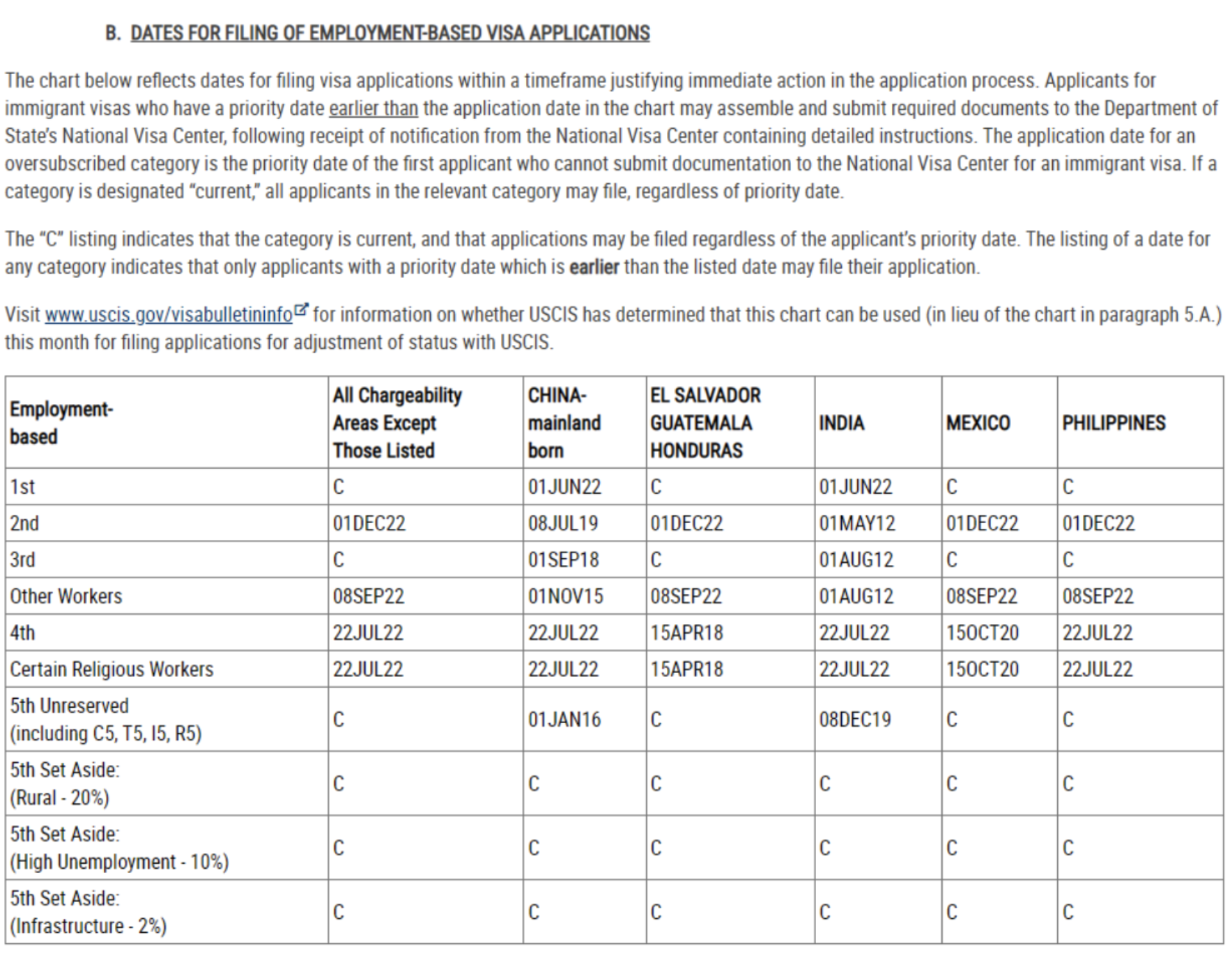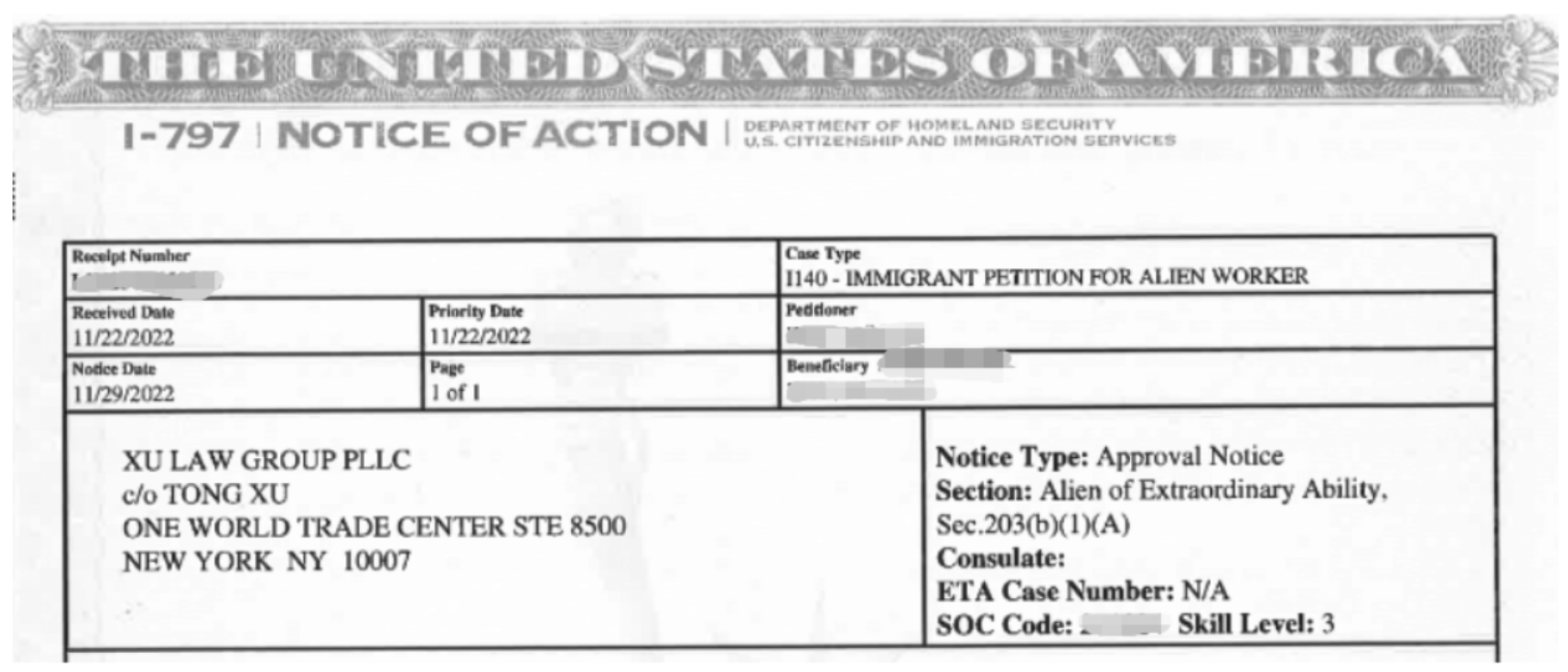January 2023 Visa Bulletin: What You Need to Know about the Recent Visa Bulletin Update
What is Visa Bulletin Retrogression?
Green card applicants typically advance in line when the deadlines for the visa bulletin move forward over time, although this isn't always the case. When there are more applications for a green card category in a given month than USCIS or the State Department was expecting, the cut-off dates for the subsequent month might move backwards. This is called a “visa retrogression,” and it’s most common around the end of the government’s fiscal year.
“EB1 applicants Beware!”
Usually, as the 1st preference categories, all EB1 applicants will not need to wait long to file their I-485. This has changed according to the last Visa Bulletin. The most recent "Visa Bulletin” was published on the official Travel.State.Gov. website on Dec.20, 2022. The Upcoming Visa Bulletin (January 2023) indicates that the Priority Date (PD) for EB1 visas was pushed back for the first time in a very long time for Chinese Mainlanders and Indians.
January 2023 Visa Bulletin for Employment
What is the Visa Bulletin
Congress set a limit on the amount of green cards that may be issued each year, which is why there is a Visa Bulletin. The Department of State publishes the visa bulletin each month for you to check how far along you are in the queue. This annual green card cap has constantly been exceeded by the number of applicants, thus resulting in a backlog.
Depending on when the I-140 petition was initially filed, it identifies which green card applicants are able to advance. Based on how quickly the "line" is moving, you may calculate how long it will take to acquire your green card.
Important terms in the Visa Bulletin
Priority date: This is the date that U.S. Citizenship and Immigration Services (USCIS) received your I-140 petition. Consider this day as your position in the green card queue. Your priority date can be found on the I-797 document that USCIS mails to you after approving your I-140 petition.
Current (C): "Current" in the visa bulletin refers to no backlog/ no waiting period for a green card. Once a green card is available and a particular priority date has moved to the front of the queue, it is considered to be "current." Alternatively, a preference category as a whole may be considered "current" if there is no wait time or backlog for that category.
Chargeability area: This is the applicant’s country of birth.
Cut-off date: The dates you see on the visa bulletin tables. Think of this date as the front of the green card line. Green card applicants with priority dates prior to the cut-off date can submit their green card applications. Green card applicants with priority dates after the cut-off date have to keep waiting.
You'll see different columns for China; El Salvador, Guatemala, Honduras; India, Mexico, and the Philippines in the visa bulletin. Because of the high annual demand in these four countries, the wait time for a green card is frequently longer. As a result, each of these four counties has its own backlogs and green card lines.
For example:
Your Priority Date on the I-797 Notice is Nov.22, 2022, your case may be or rejected by USCIS if you file in January as the Visa Bulletin suggests the priority date is pushed back till June 1st, 2022, or held in abeyance until a visa becomes available again.
What will happen to my EB1 if I file now?
“There are still ten days until January”, one could think. “Can I squeeze in since there isn't a backlog for the December 2022 Bulletin? ”
While there is very little information out there, it is very likely that you won’t be able to file concurrently for I-140 and I-485, at least for a while.
How long will it take to get my EB1 green card in 2023?
Best Case scenario:
I-140: 15 days with Premium Processing
I-140: 20 months with regular processing
Between I-140 and I-485, if you are Indian or Chinese, 6 months
I-485 takes 20-50 months to process
USCIS Processing Time
See:https://egov.uscis.gov/processing-times/
“I’m on a visa in the US right now, what do I need to do? “
If your visa is expiring before the PD, you need to renew your visa/ find a valid visa to keep your status legal until your PD becomes current.



